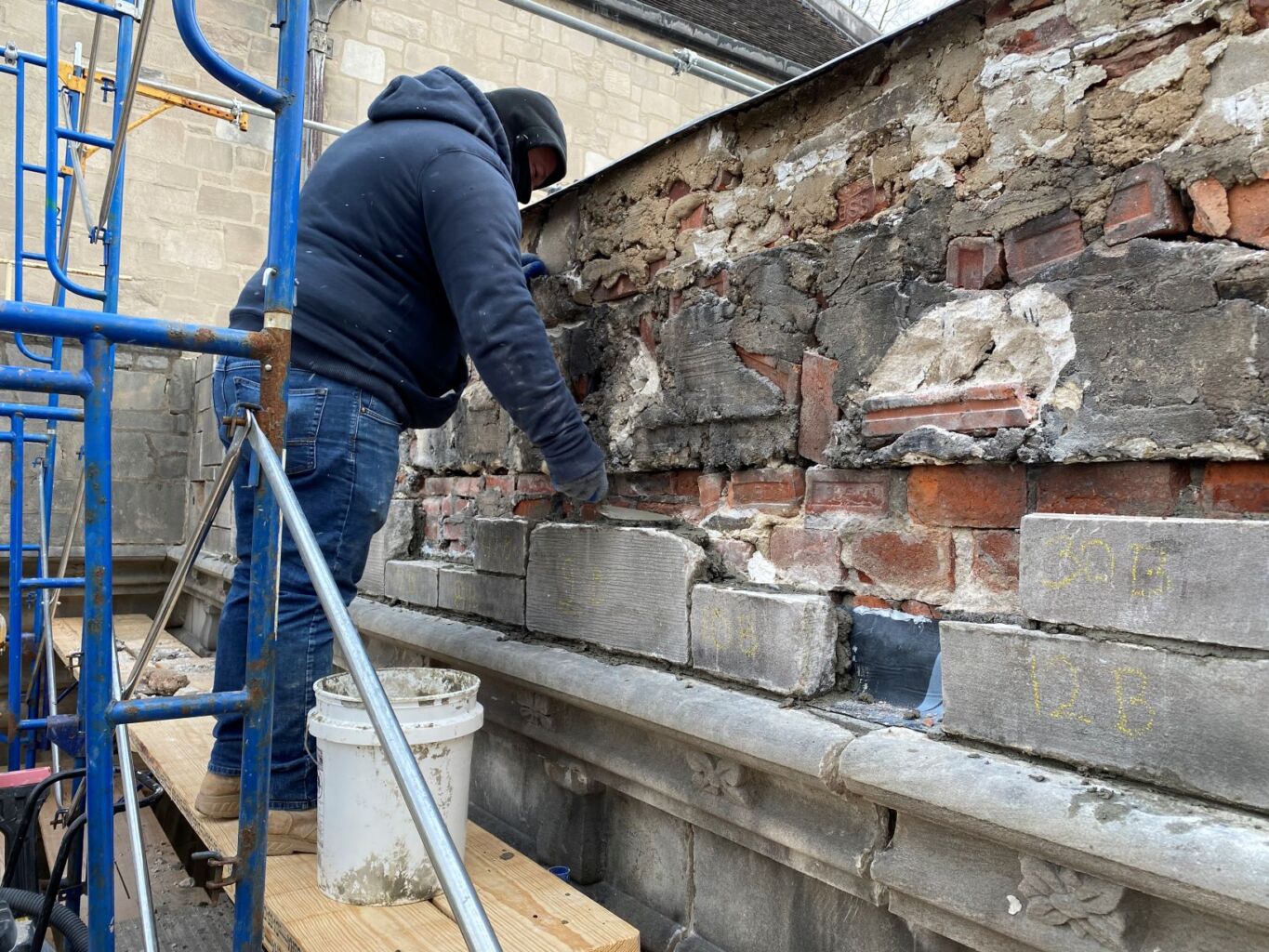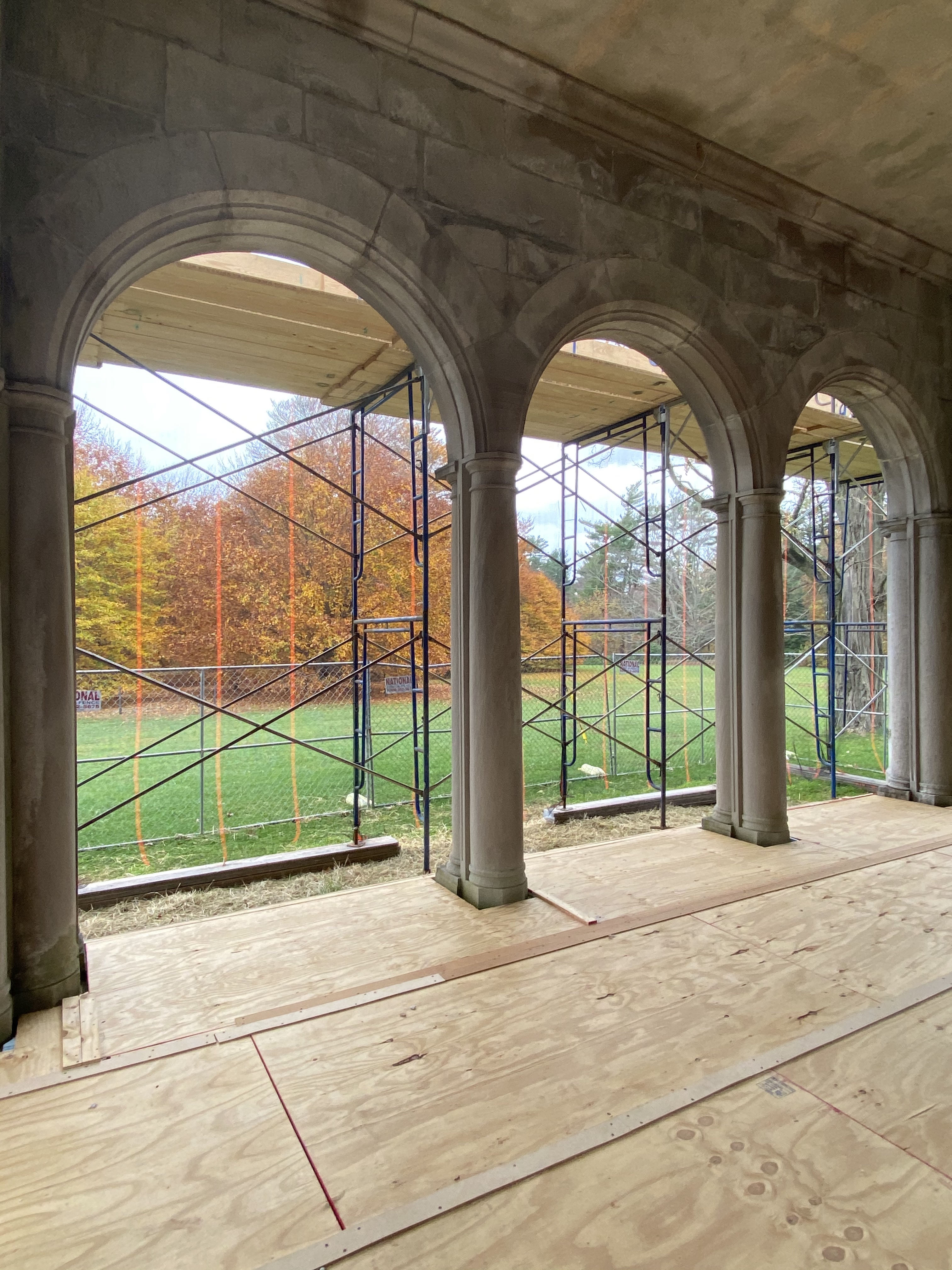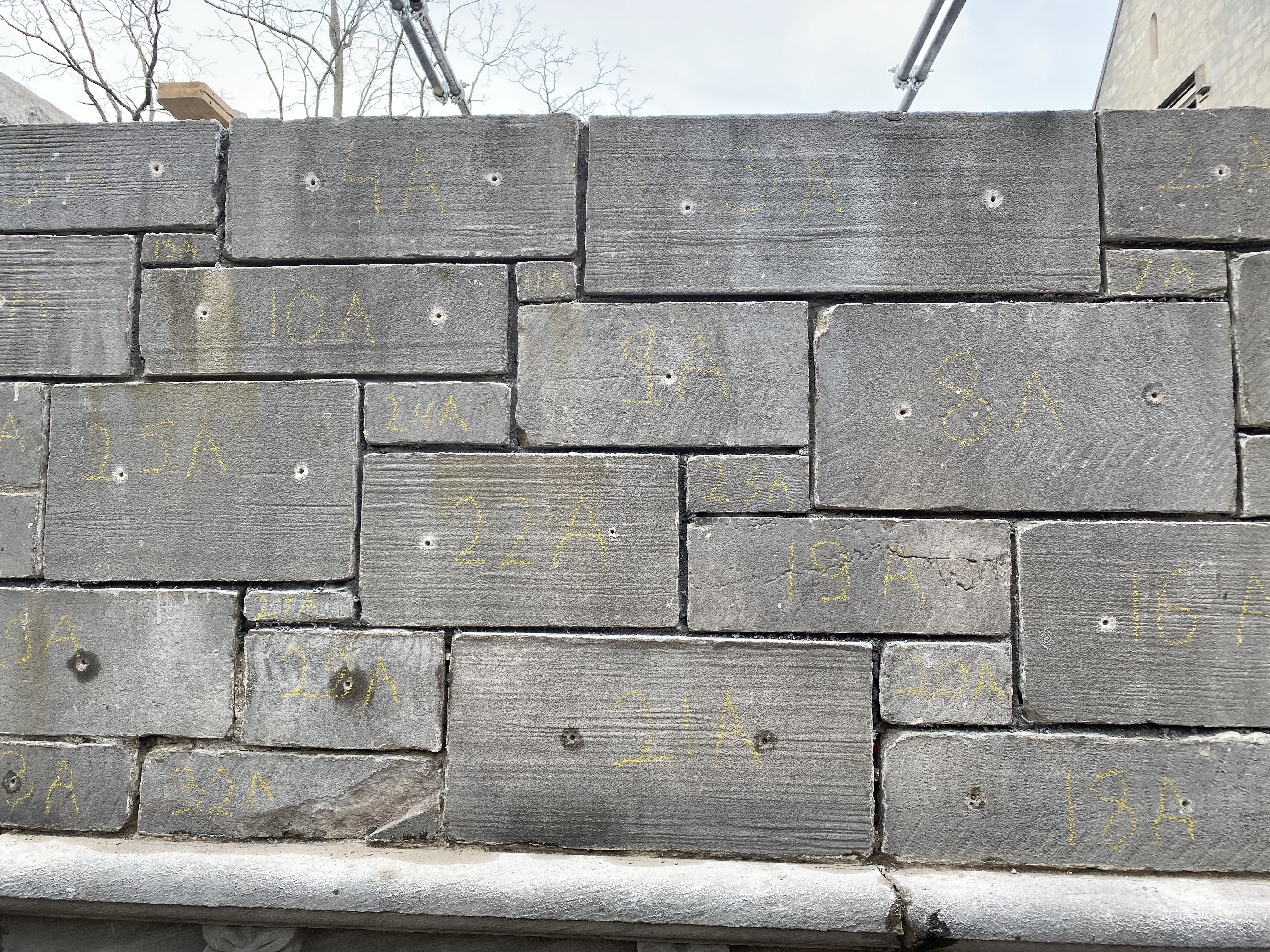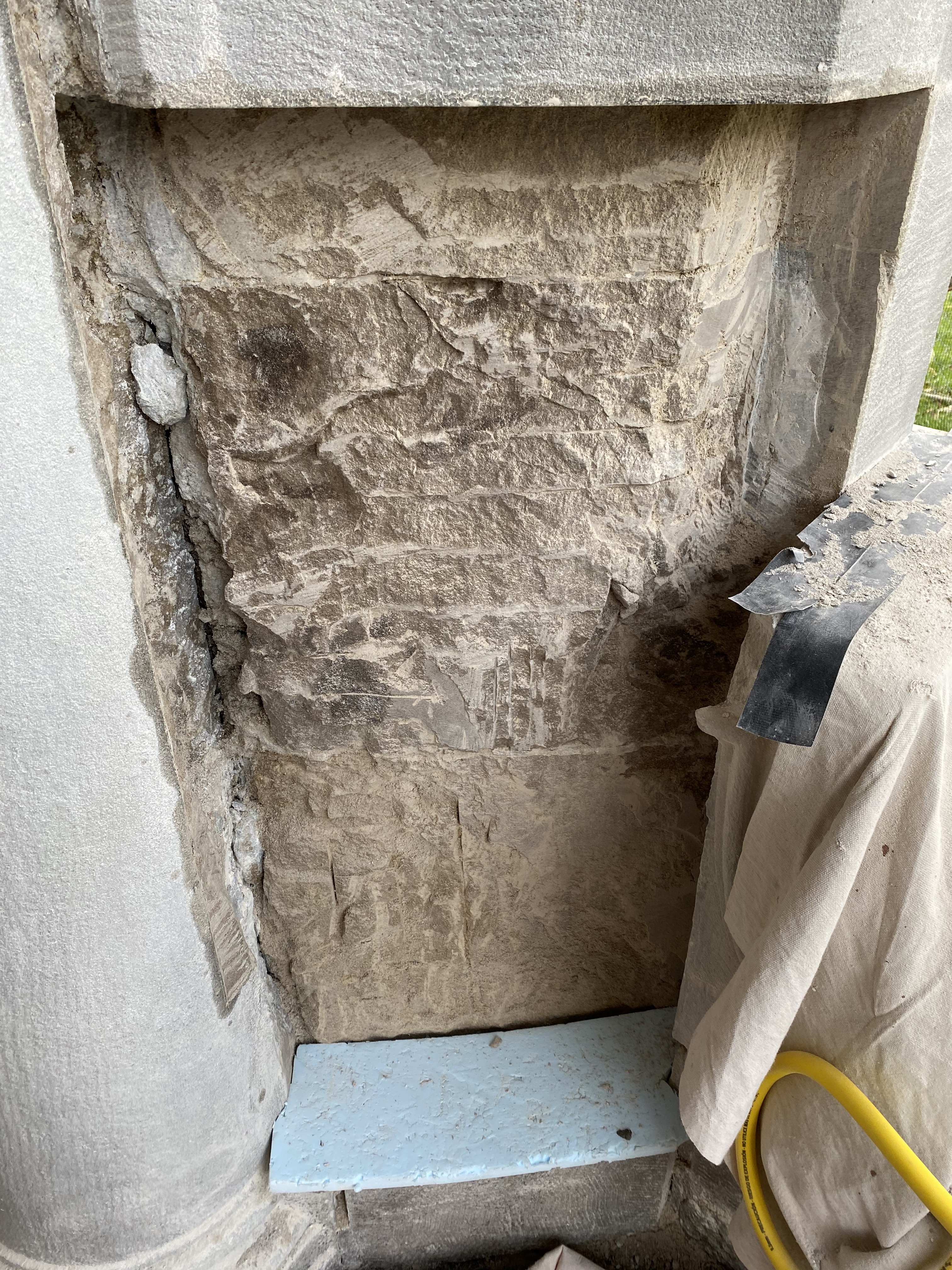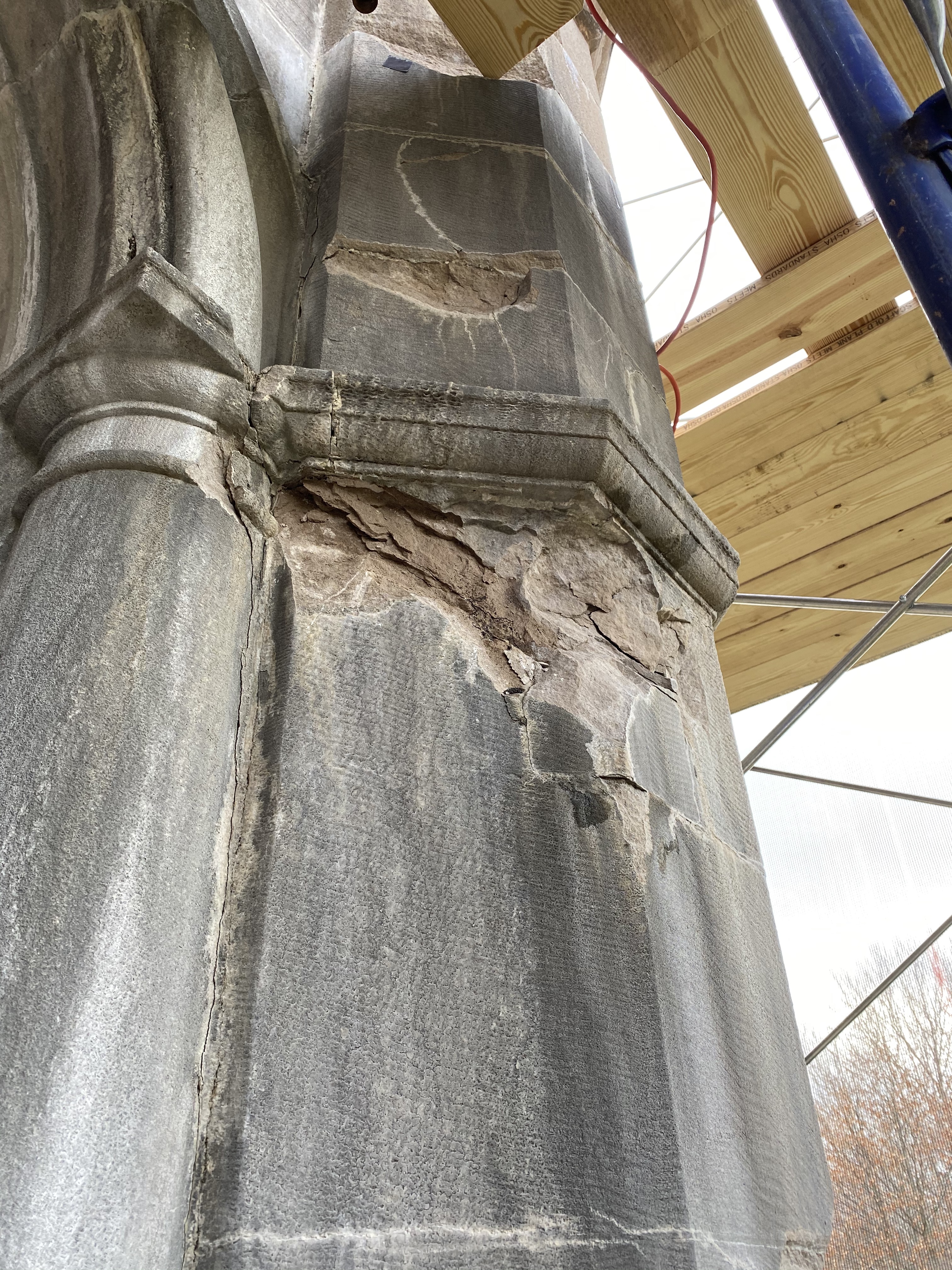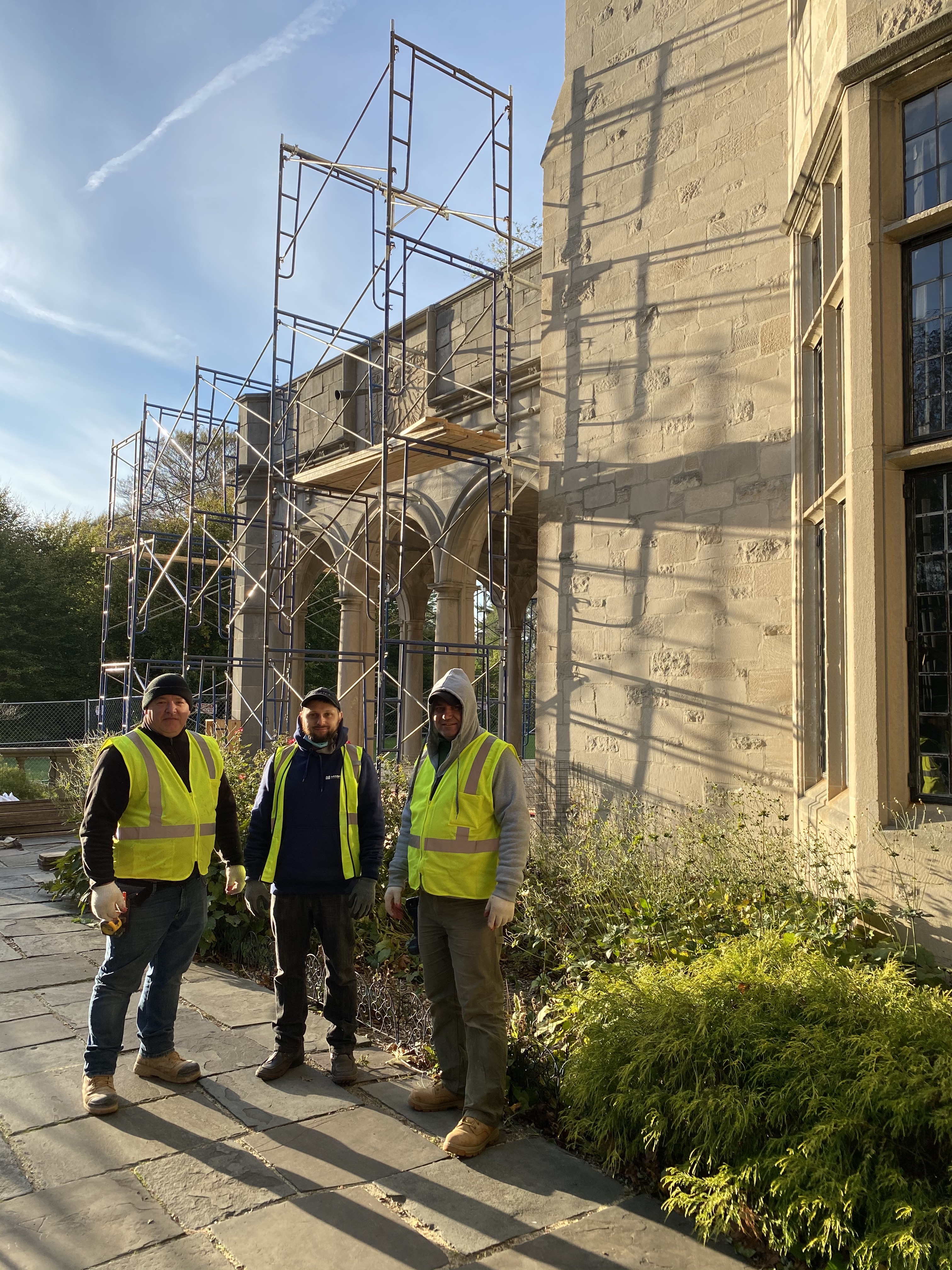The restoration of the West Portico of Coe Hall has made great progress since the project began about 6 weeks ago. Planting Fields Foundation is working with Aegis Restauro, LLC, a conservation firm specializing in the restoration of historic stone and building materials to carry out the highly skilled craftsmanship required for the project. The architecture firm of Jan Hird Pokorny Associates (JHPA) is collaborating closely with Aegis Restauro to ensure the best practices and the highest standards of historic restoration. The project began with a careful assessment of the structure in order to identify any damage or failing elements that needed repair or replacement. Safety measures and precautions were then put in place in order to protect the surrounding elements of Coe Hall while construction was underway.
The terracotta tile on the terrace has been completely removed, revealing a significant amount of water that had been trapped beneath the surface. Upon inspection, the combination of an insignificant pitch to the terrace at the time of construction and a failing drainage system was leading to years of water damage to the structure. Once the repairs and improvements are completed, new terracotta tiles will be placed on the terrace. The restoration team has also removed the loose and damaged stones from the West Portico’s walls and are carefully cleaning and repairing the stones to be reused or replaced where possible. The crew made an interesting discovery when they removed the capstones to find that the interior masonry was made up largely of rubble of other building materials from Coe Hall. This is likely due to the original builders wanting to use up any excess construction materials from the estate.
The team is meticulously protecting the historic elements of the West Portico as state-of-the-art masonry techniques are used to reinforce the structure, as well as resetting the stones back in place with pins. Aegis Restauro has also begun to repair the damage to the limestone columns using the “Dutchman Process”. This repair technique allows the team to patch the damaged areas of the columns while preserving as much of the original building material as possible. Replacement stones are hand tooled to match the markings of the original stone and with time and weathering will match seamlessly. These techniques will not only repair years of damage but also help preserve this striking architectural feature for years to come.
As the temperature begins to drop, the project is preparing for a winter hiatus in order to ensure optimal conditions for the remainder of the masonry work. The team will secure the site for the winter months and will resume in the early spring to complete the restoration of the West Portico.
We are pleased with the status of the project thus far as it brings us closer to reopening this space to the public. Stay tuned to see if we find any more interesting surprises along the way!
by James McPartland, Preservation Intern
December 9, 2020

